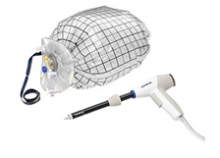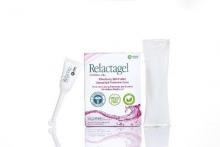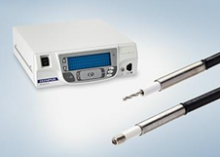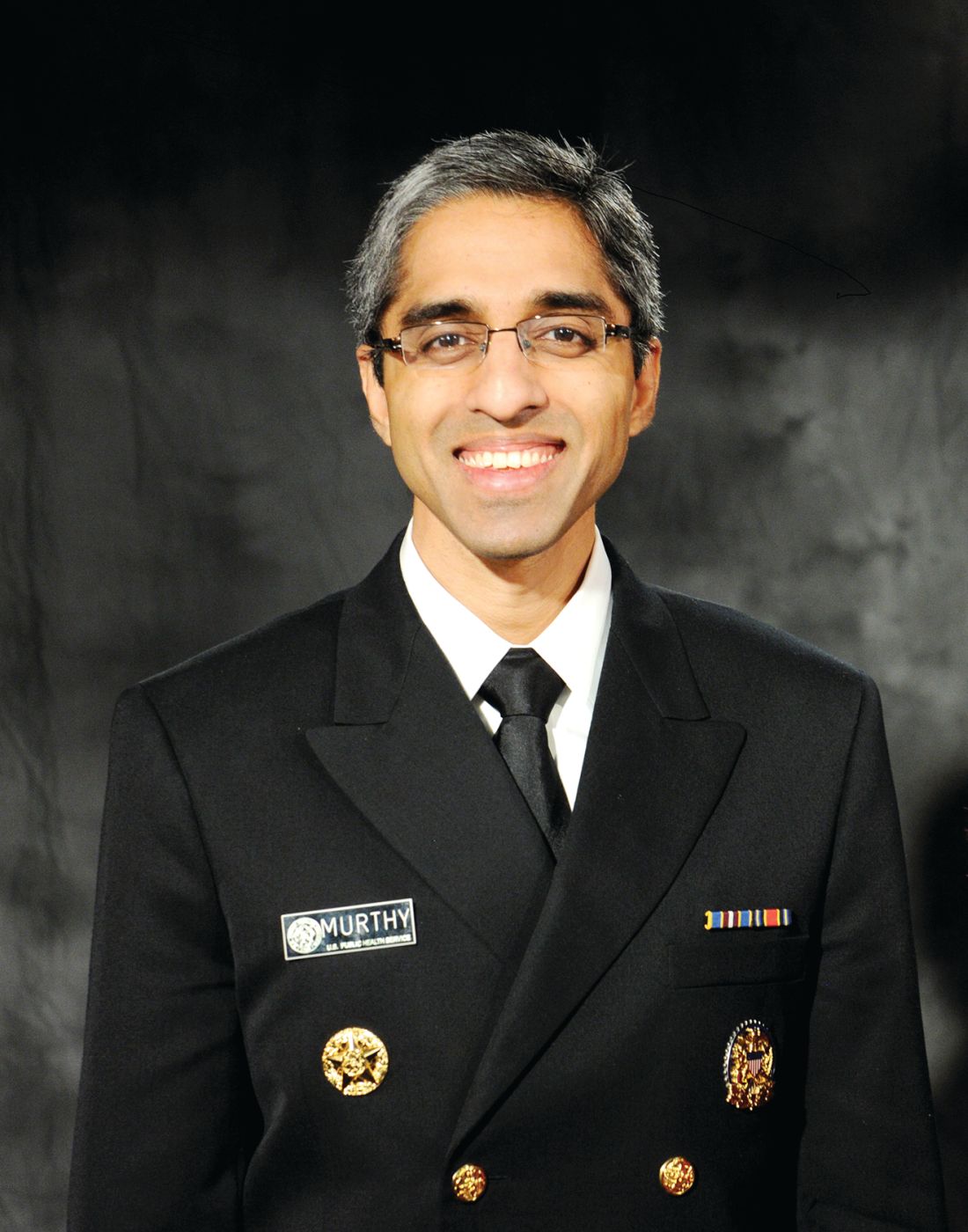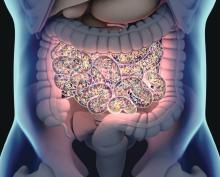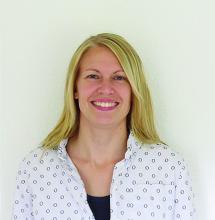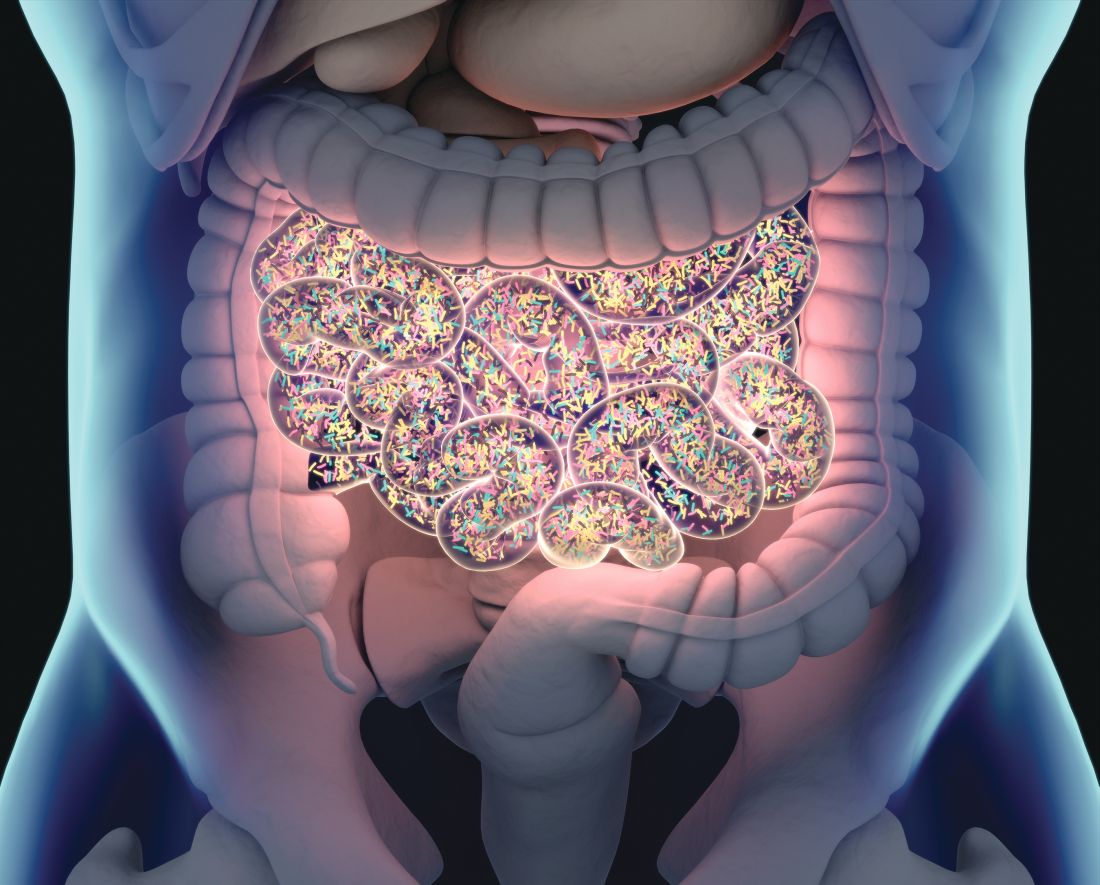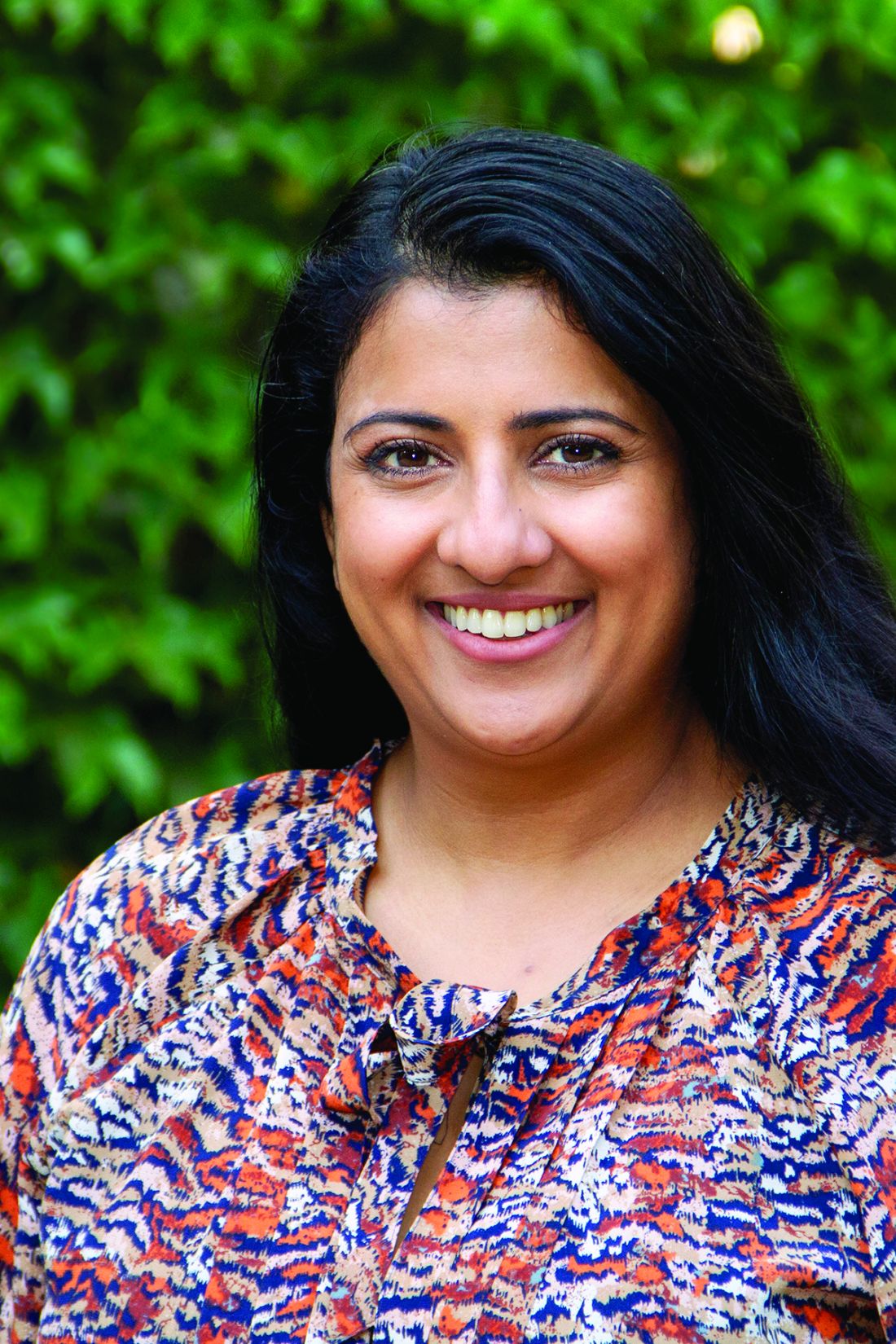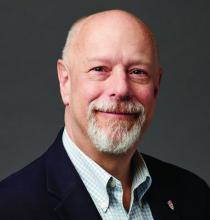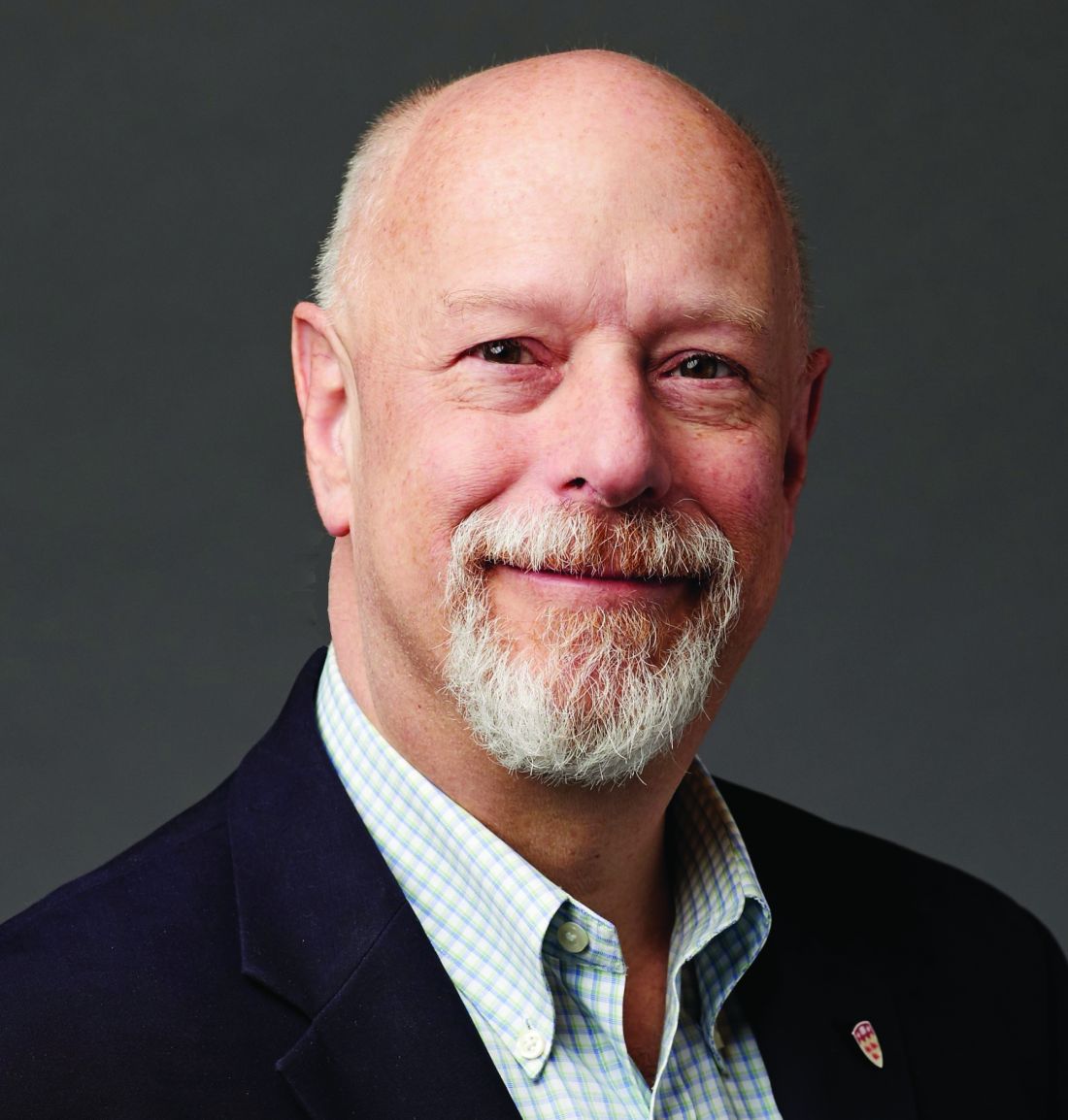User login
FDA and power morcellation, gel for vaginal odor, and an intrauterine electrosurgery system
FDA guidance for power morcellation
“The FDA has granted marketing authorization for one containment system and continues to encourage innovation in this area” said the report. Olympus’ Pneumoliner is the only FDA cleared containment device to provide a laparoscopic option for appropriately identified patients undergoing myomectomy and hysterectomy. The containment system is sold with Olympus’ PK Morcellator, but the company says that it has made the Pneumoliner available to physicians choosing an alternate to the PK Morcellator, provided that there is device compatibility. The Pneumoliner “reduces the spread of benign tissue into the abdominal cavity, in which pathologies, like fibroids, may regrow when tissue or cells are inadvertently left behind,” according to Olympus.
Vaginal odor elimination gel
The gel is sold in 7 single-day applications, with a single tube used per day at bedtime to eliminate unwanted odor. To maintain freshness and comfort, a single tube of Relactagel can be used for 2 to 3 days after a woman’s menstrual cycle, says Kora Healthcare. The company warns that mild irritation can occur with product use during fungal infections or when small tears are present in the vaginal tissue and that use should be discontinued if irritation occurs. In addition, if trying to become pregnant Relatagel should not be used, advises Kora Healthcare, although the gel is not a contraceptive.
Intrauterine electrosurgery system
FDA guidance for power morcellation
“The FDA has granted marketing authorization for one containment system and continues to encourage innovation in this area” said the report. Olympus’ Pneumoliner is the only FDA cleared containment device to provide a laparoscopic option for appropriately identified patients undergoing myomectomy and hysterectomy. The containment system is sold with Olympus’ PK Morcellator, but the company says that it has made the Pneumoliner available to physicians choosing an alternate to the PK Morcellator, provided that there is device compatibility. The Pneumoliner “reduces the spread of benign tissue into the abdominal cavity, in which pathologies, like fibroids, may regrow when tissue or cells are inadvertently left behind,” according to Olympus.
Vaginal odor elimination gel
The gel is sold in 7 single-day applications, with a single tube used per day at bedtime to eliminate unwanted odor. To maintain freshness and comfort, a single tube of Relactagel can be used for 2 to 3 days after a woman’s menstrual cycle, says Kora Healthcare. The company warns that mild irritation can occur with product use during fungal infections or when small tears are present in the vaginal tissue and that use should be discontinued if irritation occurs. In addition, if trying to become pregnant Relatagel should not be used, advises Kora Healthcare, although the gel is not a contraceptive.
Intrauterine electrosurgery system
FDA guidance for power morcellation
“The FDA has granted marketing authorization for one containment system and continues to encourage innovation in this area” said the report. Olympus’ Pneumoliner is the only FDA cleared containment device to provide a laparoscopic option for appropriately identified patients undergoing myomectomy and hysterectomy. The containment system is sold with Olympus’ PK Morcellator, but the company says that it has made the Pneumoliner available to physicians choosing an alternate to the PK Morcellator, provided that there is device compatibility. The Pneumoliner “reduces the spread of benign tissue into the abdominal cavity, in which pathologies, like fibroids, may regrow when tissue or cells are inadvertently left behind,” according to Olympus.
Vaginal odor elimination gel
The gel is sold in 7 single-day applications, with a single tube used per day at bedtime to eliminate unwanted odor. To maintain freshness and comfort, a single tube of Relactagel can be used for 2 to 3 days after a woman’s menstrual cycle, says Kora Healthcare. The company warns that mild irritation can occur with product use during fungal infections or when small tears are present in the vaginal tissue and that use should be discontinued if irritation occurs. In addition, if trying to become pregnant Relatagel should not be used, advises Kora Healthcare, although the gel is not a contraceptive.
Intrauterine electrosurgery system
Clinician well-being a top priority, Surgeon General says
Clinicians’ well-being is a “crisis” of grave import to the public health and a top issue that he hopes to get more squarely on the public radar screen, Surgeon General Vivek Murthy, MD, MBA, said May 6 in a “fireside chat” with SHM president Danielle Scheurer, MD, MSRC, SFHM, at SHM Converge, the annual conference of the Society of Hospital Medicine.
“This is a crisis that I don’t know that the country recognizes is fully important,” Dr. Murthy said. “I don’t think that most people in the public recognize just how extraordinarily difficult it is, for many clinicians, to come to practice. And if the clinicians continue to burn out at the rate that they are – in addition to the humanitarian crisis of people who are struggling that we should all feel concern about – it will impact care in a profound way.” He said part of his plan is a “national agenda” for clinician well-being, with a clear pathway for creating an environment more conducive to providing quality patient care.
Dr. Scheurer said that this was “welcome news and wonderful to hear.”
“Fortunately or unfortunately, now I do think it’s more in the front seat,” she said, adding that “this notion of ‘heal thyself,’ we know doesn’t work and these are really systemic ailments that we all have to tackle together.”
Dr. Murthy, a hospitalist by training, recently began his second term as Surgeon General, having served under President Obama and appointed to the post again by President Biden. This second appointment is different in the knowledge he has about the job from the start, in the enormity of the public health challenges posed by the COVID-19 pandemic, and in the political tenor of the country.
He said one of his main priorities is to “recenter our public health response” with scientists and public health leaders regaining their proper role.
“Have them be the voices that are actually speaking directly to the public, not in a way that’s biased by the politics or by politicians, but it’s really guided again by the science and substance of what we know needs to happen,” he said.
The response to COVID goes beyond continuing an aggressive vaccination and testing campaign, he said. The pandemic has given rise to worse mental health issues such as depression and anxiety, substance use disorders, and delays in care for other medical conditions for fear of infection – and these are all priorities, Dr. Murthy said.
One “silver lining” of the pandemic is the expansion of telehealth, but this needs refining and persistence to make it work optimally for all patients, he said.
“We have to ensure that that expansion continues and that it’s even – meaning that there are so many parts of the country where broadband access is a challenge for patients, so they don’t have the benefits of telemedicine,” he said. “We also need to ensure that these systems are integrated across our current systems, across hospitals so that we’re not creating more work for clinicians when it comes to utilizing this technology to reach their patients.”
Clinicians – typically viewed as coming to Capitol Hill only to push for higher payment or changes to medical liability laws – need to use their trusted voices to raise the profile of preventive care and identifying and fixing social barriers related to health, such as transportation issues and unsafe neighborhoods, Dr. Murthy said.
“No one really celebrates the heart attack that was prevented or the asthma that was prevented – we celebrate the illness that took place and was cured,” he said. “We know as clinicians that if you really want to reduce human suffering that you have to focus on the prevention side of the house, and I think that unless our colleagues in medicine and in public health come together and advocate for greater investments in prevention, or a national agenda around prevention, my worry is that it won’t naturally develop.”
On vaccine hesitancy, Dr. Murthy said that the United States needs to work more in increasing confidence that the vaccines will work, and in access to vaccines, but, mostly, in motivation.
“What we’ve learned is that ultimately trusted voices are what make all the difference when it comes to vaccination,” he said. “It’s one of these large, people-powered movements that we have to build in our community.”
Dr. Scheurer noted that, with hospitalists in 90% of U.S. hospitals, they can play a big role. “If we can all do our part then we’ll at least take the ball further down the field.”
Dr. Murthy added that, since residency, when he cared for young cancer patients near his own age, he has focused on “finding meaning now” in his work and life. The pandemic has reinforced this, and he doesn’t necessarily want life to go back to exactly how it was before the pandemic.
“Many of us are thinking – ‘Is there actually a better way for us to live our lives and design our workdays and our choices other than what we were doing prepandemic? Can we center our lives more around the people we love and care about, can we design our work to accommodate our family as opposed to the other way around, to always make our families accommodate our work?’ – These are the kinds of choices that we have to make as a society.”
Clinicians’ well-being is a “crisis” of grave import to the public health and a top issue that he hopes to get more squarely on the public radar screen, Surgeon General Vivek Murthy, MD, MBA, said May 6 in a “fireside chat” with SHM president Danielle Scheurer, MD, MSRC, SFHM, at SHM Converge, the annual conference of the Society of Hospital Medicine.
“This is a crisis that I don’t know that the country recognizes is fully important,” Dr. Murthy said. “I don’t think that most people in the public recognize just how extraordinarily difficult it is, for many clinicians, to come to practice. And if the clinicians continue to burn out at the rate that they are – in addition to the humanitarian crisis of people who are struggling that we should all feel concern about – it will impact care in a profound way.” He said part of his plan is a “national agenda” for clinician well-being, with a clear pathway for creating an environment more conducive to providing quality patient care.
Dr. Scheurer said that this was “welcome news and wonderful to hear.”
“Fortunately or unfortunately, now I do think it’s more in the front seat,” she said, adding that “this notion of ‘heal thyself,’ we know doesn’t work and these are really systemic ailments that we all have to tackle together.”
Dr. Murthy, a hospitalist by training, recently began his second term as Surgeon General, having served under President Obama and appointed to the post again by President Biden. This second appointment is different in the knowledge he has about the job from the start, in the enormity of the public health challenges posed by the COVID-19 pandemic, and in the political tenor of the country.
He said one of his main priorities is to “recenter our public health response” with scientists and public health leaders regaining their proper role.
“Have them be the voices that are actually speaking directly to the public, not in a way that’s biased by the politics or by politicians, but it’s really guided again by the science and substance of what we know needs to happen,” he said.
The response to COVID goes beyond continuing an aggressive vaccination and testing campaign, he said. The pandemic has given rise to worse mental health issues such as depression and anxiety, substance use disorders, and delays in care for other medical conditions for fear of infection – and these are all priorities, Dr. Murthy said.
One “silver lining” of the pandemic is the expansion of telehealth, but this needs refining and persistence to make it work optimally for all patients, he said.
“We have to ensure that that expansion continues and that it’s even – meaning that there are so many parts of the country where broadband access is a challenge for patients, so they don’t have the benefits of telemedicine,” he said. “We also need to ensure that these systems are integrated across our current systems, across hospitals so that we’re not creating more work for clinicians when it comes to utilizing this technology to reach their patients.”
Clinicians – typically viewed as coming to Capitol Hill only to push for higher payment or changes to medical liability laws – need to use their trusted voices to raise the profile of preventive care and identifying and fixing social barriers related to health, such as transportation issues and unsafe neighborhoods, Dr. Murthy said.
“No one really celebrates the heart attack that was prevented or the asthma that was prevented – we celebrate the illness that took place and was cured,” he said. “We know as clinicians that if you really want to reduce human suffering that you have to focus on the prevention side of the house, and I think that unless our colleagues in medicine and in public health come together and advocate for greater investments in prevention, or a national agenda around prevention, my worry is that it won’t naturally develop.”
On vaccine hesitancy, Dr. Murthy said that the United States needs to work more in increasing confidence that the vaccines will work, and in access to vaccines, but, mostly, in motivation.
“What we’ve learned is that ultimately trusted voices are what make all the difference when it comes to vaccination,” he said. “It’s one of these large, people-powered movements that we have to build in our community.”
Dr. Scheurer noted that, with hospitalists in 90% of U.S. hospitals, they can play a big role. “If we can all do our part then we’ll at least take the ball further down the field.”
Dr. Murthy added that, since residency, when he cared for young cancer patients near his own age, he has focused on “finding meaning now” in his work and life. The pandemic has reinforced this, and he doesn’t necessarily want life to go back to exactly how it was before the pandemic.
“Many of us are thinking – ‘Is there actually a better way for us to live our lives and design our workdays and our choices other than what we were doing prepandemic? Can we center our lives more around the people we love and care about, can we design our work to accommodate our family as opposed to the other way around, to always make our families accommodate our work?’ – These are the kinds of choices that we have to make as a society.”
Clinicians’ well-being is a “crisis” of grave import to the public health and a top issue that he hopes to get more squarely on the public radar screen, Surgeon General Vivek Murthy, MD, MBA, said May 6 in a “fireside chat” with SHM president Danielle Scheurer, MD, MSRC, SFHM, at SHM Converge, the annual conference of the Society of Hospital Medicine.
“This is a crisis that I don’t know that the country recognizes is fully important,” Dr. Murthy said. “I don’t think that most people in the public recognize just how extraordinarily difficult it is, for many clinicians, to come to practice. And if the clinicians continue to burn out at the rate that they are – in addition to the humanitarian crisis of people who are struggling that we should all feel concern about – it will impact care in a profound way.” He said part of his plan is a “national agenda” for clinician well-being, with a clear pathway for creating an environment more conducive to providing quality patient care.
Dr. Scheurer said that this was “welcome news and wonderful to hear.”
“Fortunately or unfortunately, now I do think it’s more in the front seat,” she said, adding that “this notion of ‘heal thyself,’ we know doesn’t work and these are really systemic ailments that we all have to tackle together.”
Dr. Murthy, a hospitalist by training, recently began his second term as Surgeon General, having served under President Obama and appointed to the post again by President Biden. This second appointment is different in the knowledge he has about the job from the start, in the enormity of the public health challenges posed by the COVID-19 pandemic, and in the political tenor of the country.
He said one of his main priorities is to “recenter our public health response” with scientists and public health leaders regaining their proper role.
“Have them be the voices that are actually speaking directly to the public, not in a way that’s biased by the politics or by politicians, but it’s really guided again by the science and substance of what we know needs to happen,” he said.
The response to COVID goes beyond continuing an aggressive vaccination and testing campaign, he said. The pandemic has given rise to worse mental health issues such as depression and anxiety, substance use disorders, and delays in care for other medical conditions for fear of infection – and these are all priorities, Dr. Murthy said.
One “silver lining” of the pandemic is the expansion of telehealth, but this needs refining and persistence to make it work optimally for all patients, he said.
“We have to ensure that that expansion continues and that it’s even – meaning that there are so many parts of the country where broadband access is a challenge for patients, so they don’t have the benefits of telemedicine,” he said. “We also need to ensure that these systems are integrated across our current systems, across hospitals so that we’re not creating more work for clinicians when it comes to utilizing this technology to reach their patients.”
Clinicians – typically viewed as coming to Capitol Hill only to push for higher payment or changes to medical liability laws – need to use their trusted voices to raise the profile of preventive care and identifying and fixing social barriers related to health, such as transportation issues and unsafe neighborhoods, Dr. Murthy said.
“No one really celebrates the heart attack that was prevented or the asthma that was prevented – we celebrate the illness that took place and was cured,” he said. “We know as clinicians that if you really want to reduce human suffering that you have to focus on the prevention side of the house, and I think that unless our colleagues in medicine and in public health come together and advocate for greater investments in prevention, or a national agenda around prevention, my worry is that it won’t naturally develop.”
On vaccine hesitancy, Dr. Murthy said that the United States needs to work more in increasing confidence that the vaccines will work, and in access to vaccines, but, mostly, in motivation.
“What we’ve learned is that ultimately trusted voices are what make all the difference when it comes to vaccination,” he said. “It’s one of these large, people-powered movements that we have to build in our community.”
Dr. Scheurer noted that, with hospitalists in 90% of U.S. hospitals, they can play a big role. “If we can all do our part then we’ll at least take the ball further down the field.”
Dr. Murthy added that, since residency, when he cared for young cancer patients near his own age, he has focused on “finding meaning now” in his work and life. The pandemic has reinforced this, and he doesn’t necessarily want life to go back to exactly how it was before the pandemic.
“Many of us are thinking – ‘Is there actually a better way for us to live our lives and design our workdays and our choices other than what we were doing prepandemic? Can we center our lives more around the people we love and care about, can we design our work to accommodate our family as opposed to the other way around, to always make our families accommodate our work?’ – These are the kinds of choices that we have to make as a society.”
FROM SHM CONVERGE 2021
Trial: Fecal transplantation safe but ineffective in PsA
The first clinical trial of fecal microbiota transplantation in patients with psoriatic arthritis has found the procedure to be as safe as a sham procedure, but it didn’t show any effectiveness in decreasing PsA symptoms over 6 months, a team of researchers in Denmark reported in Annals of the Rheumatic Diseases (2021 Apr 29. 10.1136/annrheumdis-2020-219511).
Nonetheless, the investigators said the trial indicates fecal microbiota transplantation (FMT) is worthy of further study.
“Overall, we think that the results are very interesting and that the feasibility and safety aspects as well as the clinical results of the trial may encourage more research into the potential of FMT in the treatment of inflammatory arthritis and may help guide the direction of future trials within the field,” lead author Maja S. Kragsnaes, MD, PhD, and principal investigator Torkell Ellingsen, MD, PhD, of Odense (Denmark) University Hospital said together in an interview.
“The most important findings from this trial is that FMT appears to be safe in patients with PsA and that the patients find the treatment acceptable, and it supports future research into the therapeutic potential of FMT in PsA,” they said.
The study evaluated 6-month outcomes of 31 patients randomized to the FMT and sham groups. FMT patients were three times more likely to experience treatment failure – defined by the need for treatment intensification – with failure rates of 60% versus 20% in the sham group.
As a secondary endpoint, the study used 6-month change in the Health Assessment Questionnaire Disability Index (HAQ-DI) and 20% improvement in American College of Rheumatology criteria (ACR20). The sham group demonstrated a greater decrease in HAQ-DI, indicating better physical function (–0.30 vs. –0.07; P = .031). The proportion of ACR20 responders was similar between both groups: 47% for the FMT patients (7 of 15) and 53% for sham (8 of 15).
The study included adults aged 18-75 years with active peripheral disease, defined as three or more swollen joints, who’d been taking at least15 mg methotrexate a week for at least 3 months before enrolling in the study, with a washout period of 12 weeks (26 weeks for those on biologic agents). Four healthy donors provided the stool transplants.
In the study, Dr. Kragsnaes and Dr. Ellingsen acknowledged that FMT has been shown to be safe for Clostridioides difficile infection or inflammatory bowel disease when “thoroughly screened stool” is used. “Hence,” they wrote, “our findings add to the growing body of evidence suggesting a gut-joint axis in the pathogenesis of PsA.”
Factors that may influence the effectiveness of FMT in PsA merit further investigation, Dr. Kragsnaes and Dr. Ellingsen said. “From FMT trials in patients with active ulcerative colitis, higher dose and repeated administration appear to be effective and safe in inducing remission,” they said in their joint statement, pointing to research from China.
“Moreover,” they added, “successes of FMT in inflammatory bowel disease appear to have been driven by ‘superdonors’ characterized by the presence or absence of specific bacteria species.”
They said will continue to investigate the effectiveness of FMT in immune-mediated diseases, including how to characterize superdonors.
“We will conduct new randomized trials using different FMT strategies – by changing the type of administration form, dose, and treatment frequency – to explore whether microbial dysbiosis or specific bacteria are common or decisive mediators of disease activity in inflammatory diseases and whether this proposed relation can be modified without exacerbating the disease,” Dr. Kragsnaes and Dr. Ellingsen said.
Dr. Kragsnaes and Dr. Ellingsen had no relevant financial relationships to disclose.
The first clinical trial of fecal microbiota transplantation in patients with psoriatic arthritis has found the procedure to be as safe as a sham procedure, but it didn’t show any effectiveness in decreasing PsA symptoms over 6 months, a team of researchers in Denmark reported in Annals of the Rheumatic Diseases (2021 Apr 29. 10.1136/annrheumdis-2020-219511).
Nonetheless, the investigators said the trial indicates fecal microbiota transplantation (FMT) is worthy of further study.
“Overall, we think that the results are very interesting and that the feasibility and safety aspects as well as the clinical results of the trial may encourage more research into the potential of FMT in the treatment of inflammatory arthritis and may help guide the direction of future trials within the field,” lead author Maja S. Kragsnaes, MD, PhD, and principal investigator Torkell Ellingsen, MD, PhD, of Odense (Denmark) University Hospital said together in an interview.
“The most important findings from this trial is that FMT appears to be safe in patients with PsA and that the patients find the treatment acceptable, and it supports future research into the therapeutic potential of FMT in PsA,” they said.
The study evaluated 6-month outcomes of 31 patients randomized to the FMT and sham groups. FMT patients were three times more likely to experience treatment failure – defined by the need for treatment intensification – with failure rates of 60% versus 20% in the sham group.
As a secondary endpoint, the study used 6-month change in the Health Assessment Questionnaire Disability Index (HAQ-DI) and 20% improvement in American College of Rheumatology criteria (ACR20). The sham group demonstrated a greater decrease in HAQ-DI, indicating better physical function (–0.30 vs. –0.07; P = .031). The proportion of ACR20 responders was similar between both groups: 47% for the FMT patients (7 of 15) and 53% for sham (8 of 15).
The study included adults aged 18-75 years with active peripheral disease, defined as three or more swollen joints, who’d been taking at least15 mg methotrexate a week for at least 3 months before enrolling in the study, with a washout period of 12 weeks (26 weeks for those on biologic agents). Four healthy donors provided the stool transplants.
In the study, Dr. Kragsnaes and Dr. Ellingsen acknowledged that FMT has been shown to be safe for Clostridioides difficile infection or inflammatory bowel disease when “thoroughly screened stool” is used. “Hence,” they wrote, “our findings add to the growing body of evidence suggesting a gut-joint axis in the pathogenesis of PsA.”
Factors that may influence the effectiveness of FMT in PsA merit further investigation, Dr. Kragsnaes and Dr. Ellingsen said. “From FMT trials in patients with active ulcerative colitis, higher dose and repeated administration appear to be effective and safe in inducing remission,” they said in their joint statement, pointing to research from China.
“Moreover,” they added, “successes of FMT in inflammatory bowel disease appear to have been driven by ‘superdonors’ characterized by the presence or absence of specific bacteria species.”
They said will continue to investigate the effectiveness of FMT in immune-mediated diseases, including how to characterize superdonors.
“We will conduct new randomized trials using different FMT strategies – by changing the type of administration form, dose, and treatment frequency – to explore whether microbial dysbiosis or specific bacteria are common or decisive mediators of disease activity in inflammatory diseases and whether this proposed relation can be modified without exacerbating the disease,” Dr. Kragsnaes and Dr. Ellingsen said.
Dr. Kragsnaes and Dr. Ellingsen had no relevant financial relationships to disclose.
The first clinical trial of fecal microbiota transplantation in patients with psoriatic arthritis has found the procedure to be as safe as a sham procedure, but it didn’t show any effectiveness in decreasing PsA symptoms over 6 months, a team of researchers in Denmark reported in Annals of the Rheumatic Diseases (2021 Apr 29. 10.1136/annrheumdis-2020-219511).
Nonetheless, the investigators said the trial indicates fecal microbiota transplantation (FMT) is worthy of further study.
“Overall, we think that the results are very interesting and that the feasibility and safety aspects as well as the clinical results of the trial may encourage more research into the potential of FMT in the treatment of inflammatory arthritis and may help guide the direction of future trials within the field,” lead author Maja S. Kragsnaes, MD, PhD, and principal investigator Torkell Ellingsen, MD, PhD, of Odense (Denmark) University Hospital said together in an interview.
“The most important findings from this trial is that FMT appears to be safe in patients with PsA and that the patients find the treatment acceptable, and it supports future research into the therapeutic potential of FMT in PsA,” they said.
The study evaluated 6-month outcomes of 31 patients randomized to the FMT and sham groups. FMT patients were three times more likely to experience treatment failure – defined by the need for treatment intensification – with failure rates of 60% versus 20% in the sham group.
As a secondary endpoint, the study used 6-month change in the Health Assessment Questionnaire Disability Index (HAQ-DI) and 20% improvement in American College of Rheumatology criteria (ACR20). The sham group demonstrated a greater decrease in HAQ-DI, indicating better physical function (–0.30 vs. –0.07; P = .031). The proportion of ACR20 responders was similar between both groups: 47% for the FMT patients (7 of 15) and 53% for sham (8 of 15).
The study included adults aged 18-75 years with active peripheral disease, defined as three or more swollen joints, who’d been taking at least15 mg methotrexate a week for at least 3 months before enrolling in the study, with a washout period of 12 weeks (26 weeks for those on biologic agents). Four healthy donors provided the stool transplants.
In the study, Dr. Kragsnaes and Dr. Ellingsen acknowledged that FMT has been shown to be safe for Clostridioides difficile infection or inflammatory bowel disease when “thoroughly screened stool” is used. “Hence,” they wrote, “our findings add to the growing body of evidence suggesting a gut-joint axis in the pathogenesis of PsA.”
Factors that may influence the effectiveness of FMT in PsA merit further investigation, Dr. Kragsnaes and Dr. Ellingsen said. “From FMT trials in patients with active ulcerative colitis, higher dose and repeated administration appear to be effective and safe in inducing remission,” they said in their joint statement, pointing to research from China.
“Moreover,” they added, “successes of FMT in inflammatory bowel disease appear to have been driven by ‘superdonors’ characterized by the presence or absence of specific bacteria species.”
They said will continue to investigate the effectiveness of FMT in immune-mediated diseases, including how to characterize superdonors.
“We will conduct new randomized trials using different FMT strategies – by changing the type of administration form, dose, and treatment frequency – to explore whether microbial dysbiosis or specific bacteria are common or decisive mediators of disease activity in inflammatory diseases and whether this proposed relation can be modified without exacerbating the disease,” Dr. Kragsnaes and Dr. Ellingsen said.
Dr. Kragsnaes and Dr. Ellingsen had no relevant financial relationships to disclose.
FROM ANNALS OF THE RHEUMATIC DISEASES
Genital skin exams in girls: Conduct with care, look for signs of abuse
at the American Academy of Dermatology Virtual Meeting Experience.
“One in four adult women report being childhood victims of sexual abuse, which is just a staggering number. This is an opportunity for us to identify these patients early and give them the terminology to be able to report what is happening to them,” said pediatric dermatologist Kalyani Marathe, MD, MPH, director of the division of dermatology at Cincinnati Children’s Hospital. “We also have the chance to give them a sense of agency over their bodies.”
Dr. Marathe offered the following recommendations when performing a genital skin exam:
- Make sure a “chaperone” is present. “Chaperones are a must when you’re examining children and teens,” she said. “Ask whom they prefer. For prepubertal children, you’re going to usually use the parent who’s there with them. If the parent is their father, they might ask him to step behind the curtain, in which case you can bring over your nurse or medical assistant.” Teens may ask either parent to step out of the room, she said. In that case, a nurse, medical assistant, resident, or trainee can fill in. “If you have male residents or trainees with you and the patient really does not want to be examined by a male, honor their request. Do not force them.”
- Explain why the exam is being performed. Make sure the patient understands why she is being seen, Dr. Marathe advised. For example, say something like “your pediatrician told us that you have an itchy area” or “your mom told us that there’s some loss of color in that area, that you’re having a problem there.” She added that it’s helpful to explain the type of doctor you are, with a comment such as the following: “We’re examining you because we’re doctors who specialize in skin. ... We want to help you feel better and make sure that your skin heals and is healthy.”
- Ask both the child and the parent for permission to perform the exam. While this may seem trivial, “it’s very, very important in setting the right tone for the encounter,” she said. “If the child says yes, we turn to the mom and say: ‘Mom, is it okay for us to do this exam today?’ You can see visible relief on the part of the parent, and as the parent relaxes, the child relaxes. Just saying those few things really makes the encounter so much smoother.” However, “if they say no, you have to honor the response. ... You say: ‘Okay, we’re not going to do the exam today,” and see the patient in a few weeks. If it’s urgent, an exam under anesthesia may be an option, she added.
- Talk to the child about the terms they use for private parts. It can be helpful to ask: “Do you have any terms for your private area?” According to Dr. Marathe, “this is a good chance to educate them on the terms vulva and vagina since they may be using other terminology. Making sure that they have the correct terms will actually help patients identify and report abuse earlier.” Dr. Marathe recalled that a colleague had a patient who’d been calling her private area “pound cake” and had been “reporting to her teacher that someone had been touching her ‘pound cake.’ Her teacher did not know what she meant by that, and this led to a great delay in her childhood abuse being reported.”
- Talk about what will happen during the exam. “I like to show them any instruments that we’re going to be using,” Dr. Marathe said. “If we’re using a flashlight, for example, I like to show them a picture [of a flashlight] or show them that flashlight. If we’re using a camera to do digital photography, show them that. If we’re going to be using a Q-tip or a swab to demonstrate anything or to take a culture, I like to show them that beforehand to make sure that they know what we’re doing.” In regard to photography, “make sure the parent and child know where the photos are going to go, who’s going to see them, what are they going to be used for. If they’re going to be used for educational purposes, make sure they have given explicit permission for that and they know they’ll be deidentified.”
- Make it clear that the exam won’t be painful. It’s important to put both the patient and the parent at ease on this front, Dr. Marathe said. “A lot of parents are concerned that we’re going to do a speculum exam in their prepubertal child. So make sure that it’s clarified ahead of time that we’re not going to be doing a speculum exam.”
Commenting on this topic, Tor Shwayder, MD, a pediatric dermatologist at Henry Ford Health System, Detroit, urged colleagues to take action if they feel suspicious about a possible sign of child abuse, even if they’re far from certain that anything is wrong. “Don’t ignore those feelings in the back of the brain,” he said in an interview.
Most states have child-abuse hotlines for medical professionals, and major hospitals will have child-abuse teams, Dr. Shwayder said. He urged dermatologists to take advantage of these resources when appropriate. “The professionals on the other side of the 800 number or at the hospital will help you. You don’t have to decide immediately whether this is child abuse. You just need to have a suspicion.”
Dr. Marathe and Dr. Shwayder report no disclosures.
at the American Academy of Dermatology Virtual Meeting Experience.
“One in four adult women report being childhood victims of sexual abuse, which is just a staggering number. This is an opportunity for us to identify these patients early and give them the terminology to be able to report what is happening to them,” said pediatric dermatologist Kalyani Marathe, MD, MPH, director of the division of dermatology at Cincinnati Children’s Hospital. “We also have the chance to give them a sense of agency over their bodies.”
Dr. Marathe offered the following recommendations when performing a genital skin exam:
- Make sure a “chaperone” is present. “Chaperones are a must when you’re examining children and teens,” she said. “Ask whom they prefer. For prepubertal children, you’re going to usually use the parent who’s there with them. If the parent is their father, they might ask him to step behind the curtain, in which case you can bring over your nurse or medical assistant.” Teens may ask either parent to step out of the room, she said. In that case, a nurse, medical assistant, resident, or trainee can fill in. “If you have male residents or trainees with you and the patient really does not want to be examined by a male, honor their request. Do not force them.”
- Explain why the exam is being performed. Make sure the patient understands why she is being seen, Dr. Marathe advised. For example, say something like “your pediatrician told us that you have an itchy area” or “your mom told us that there’s some loss of color in that area, that you’re having a problem there.” She added that it’s helpful to explain the type of doctor you are, with a comment such as the following: “We’re examining you because we’re doctors who specialize in skin. ... We want to help you feel better and make sure that your skin heals and is healthy.”
- Ask both the child and the parent for permission to perform the exam. While this may seem trivial, “it’s very, very important in setting the right tone for the encounter,” she said. “If the child says yes, we turn to the mom and say: ‘Mom, is it okay for us to do this exam today?’ You can see visible relief on the part of the parent, and as the parent relaxes, the child relaxes. Just saying those few things really makes the encounter so much smoother.” However, “if they say no, you have to honor the response. ... You say: ‘Okay, we’re not going to do the exam today,” and see the patient in a few weeks. If it’s urgent, an exam under anesthesia may be an option, she added.
- Talk to the child about the terms they use for private parts. It can be helpful to ask: “Do you have any terms for your private area?” According to Dr. Marathe, “this is a good chance to educate them on the terms vulva and vagina since they may be using other terminology. Making sure that they have the correct terms will actually help patients identify and report abuse earlier.” Dr. Marathe recalled that a colleague had a patient who’d been calling her private area “pound cake” and had been “reporting to her teacher that someone had been touching her ‘pound cake.’ Her teacher did not know what she meant by that, and this led to a great delay in her childhood abuse being reported.”
- Talk about what will happen during the exam. “I like to show them any instruments that we’re going to be using,” Dr. Marathe said. “If we’re using a flashlight, for example, I like to show them a picture [of a flashlight] or show them that flashlight. If we’re using a camera to do digital photography, show them that. If we’re going to be using a Q-tip or a swab to demonstrate anything or to take a culture, I like to show them that beforehand to make sure that they know what we’re doing.” In regard to photography, “make sure the parent and child know where the photos are going to go, who’s going to see them, what are they going to be used for. If they’re going to be used for educational purposes, make sure they have given explicit permission for that and they know they’ll be deidentified.”
- Make it clear that the exam won’t be painful. It’s important to put both the patient and the parent at ease on this front, Dr. Marathe said. “A lot of parents are concerned that we’re going to do a speculum exam in their prepubertal child. So make sure that it’s clarified ahead of time that we’re not going to be doing a speculum exam.”
Commenting on this topic, Tor Shwayder, MD, a pediatric dermatologist at Henry Ford Health System, Detroit, urged colleagues to take action if they feel suspicious about a possible sign of child abuse, even if they’re far from certain that anything is wrong. “Don’t ignore those feelings in the back of the brain,” he said in an interview.
Most states have child-abuse hotlines for medical professionals, and major hospitals will have child-abuse teams, Dr. Shwayder said. He urged dermatologists to take advantage of these resources when appropriate. “The professionals on the other side of the 800 number or at the hospital will help you. You don’t have to decide immediately whether this is child abuse. You just need to have a suspicion.”
Dr. Marathe and Dr. Shwayder report no disclosures.
at the American Academy of Dermatology Virtual Meeting Experience.
“One in four adult women report being childhood victims of sexual abuse, which is just a staggering number. This is an opportunity for us to identify these patients early and give them the terminology to be able to report what is happening to them,” said pediatric dermatologist Kalyani Marathe, MD, MPH, director of the division of dermatology at Cincinnati Children’s Hospital. “We also have the chance to give them a sense of agency over their bodies.”
Dr. Marathe offered the following recommendations when performing a genital skin exam:
- Make sure a “chaperone” is present. “Chaperones are a must when you’re examining children and teens,” she said. “Ask whom they prefer. For prepubertal children, you’re going to usually use the parent who’s there with them. If the parent is their father, they might ask him to step behind the curtain, in which case you can bring over your nurse or medical assistant.” Teens may ask either parent to step out of the room, she said. In that case, a nurse, medical assistant, resident, or trainee can fill in. “If you have male residents or trainees with you and the patient really does not want to be examined by a male, honor their request. Do not force them.”
- Explain why the exam is being performed. Make sure the patient understands why she is being seen, Dr. Marathe advised. For example, say something like “your pediatrician told us that you have an itchy area” or “your mom told us that there’s some loss of color in that area, that you’re having a problem there.” She added that it’s helpful to explain the type of doctor you are, with a comment such as the following: “We’re examining you because we’re doctors who specialize in skin. ... We want to help you feel better and make sure that your skin heals and is healthy.”
- Ask both the child and the parent for permission to perform the exam. While this may seem trivial, “it’s very, very important in setting the right tone for the encounter,” she said. “If the child says yes, we turn to the mom and say: ‘Mom, is it okay for us to do this exam today?’ You can see visible relief on the part of the parent, and as the parent relaxes, the child relaxes. Just saying those few things really makes the encounter so much smoother.” However, “if they say no, you have to honor the response. ... You say: ‘Okay, we’re not going to do the exam today,” and see the patient in a few weeks. If it’s urgent, an exam under anesthesia may be an option, she added.
- Talk to the child about the terms they use for private parts. It can be helpful to ask: “Do you have any terms for your private area?” According to Dr. Marathe, “this is a good chance to educate them on the terms vulva and vagina since they may be using other terminology. Making sure that they have the correct terms will actually help patients identify and report abuse earlier.” Dr. Marathe recalled that a colleague had a patient who’d been calling her private area “pound cake” and had been “reporting to her teacher that someone had been touching her ‘pound cake.’ Her teacher did not know what she meant by that, and this led to a great delay in her childhood abuse being reported.”
- Talk about what will happen during the exam. “I like to show them any instruments that we’re going to be using,” Dr. Marathe said. “If we’re using a flashlight, for example, I like to show them a picture [of a flashlight] or show them that flashlight. If we’re using a camera to do digital photography, show them that. If we’re going to be using a Q-tip or a swab to demonstrate anything or to take a culture, I like to show them that beforehand to make sure that they know what we’re doing.” In regard to photography, “make sure the parent and child know where the photos are going to go, who’s going to see them, what are they going to be used for. If they’re going to be used for educational purposes, make sure they have given explicit permission for that and they know they’ll be deidentified.”
- Make it clear that the exam won’t be painful. It’s important to put both the patient and the parent at ease on this front, Dr. Marathe said. “A lot of parents are concerned that we’re going to do a speculum exam in their prepubertal child. So make sure that it’s clarified ahead of time that we’re not going to be doing a speculum exam.”
Commenting on this topic, Tor Shwayder, MD, a pediatric dermatologist at Henry Ford Health System, Detroit, urged colleagues to take action if they feel suspicious about a possible sign of child abuse, even if they’re far from certain that anything is wrong. “Don’t ignore those feelings in the back of the brain,” he said in an interview.
Most states have child-abuse hotlines for medical professionals, and major hospitals will have child-abuse teams, Dr. Shwayder said. He urged dermatologists to take advantage of these resources when appropriate. “The professionals on the other side of the 800 number or at the hospital will help you. You don’t have to decide immediately whether this is child abuse. You just need to have a suspicion.”
Dr. Marathe and Dr. Shwayder report no disclosures.
FROM AAD VMX 2021
Novel drug offers rapid relief from agitation in serious mental illness
An investigational, orally dissolving film formulation of dexmedetomidine (BXCL501, BioXcel Therapeutics) may offer rapid relief from acute agitation related to schizophrenia or bipolar disorder (BD), results of two phase 3, randomized, placebo-controlled trials show.
For both disorders, BXCL501 showed “superiority over placebo” by meeting the primary endpoint of reduction of agitation as measured by the excited component of the Positive and Negative Syndrome Scale (PANSS), study investigator Leslie Citrome, MD, MPH, department of psychiatry and behavioral sciences, New York Medical College, Valhalla, said in an interview.
The findings were presented at the annual meeting of the American Psychiatric Association, which was held as a virtual live event.
Noninvasive option
Acute agitation in patients with schizophrenia or BD is often encountered in emergency departments (EDs) and inpatient units. When nondrug tactics fail to calm the patient, drug options include injectable antipsychotics or benzodiazepines. BXCL501 is a thin, orally dissolving film for sublingual or buccal use.
“Dexmedetomidine is a highly-selective alpha-2a receptor agonist and we haven’t really had one of those before in psychiatry for this purpose. And we haven’t had much in the way of orally dissolving thin films that are absorbed in the oral mucosa so this represents an opportunity to provide a potential intervention that does not require an injection and yet could possibly be of use in people who are agitated,” Dr. Citrome said.
The study, known as SERENITY I, included 380 adults (mean age 45.6 years, 63% male) with schizophrenia, schizoaffective disorder, or schizophreniform disorder, and acute agitation in the ED (total score ≥ 14 on the PANSS-Excited Component (PEC) scale at baseline and a score ≥ 4 on at least one of the five PEC items).
Patients were randomly allocated to a single oral dose of BXCL501: 120 mcg, 180 mcg, or placebo. A total of 372 patients (97.9%) completed the study.
Mean PEC total score was 17.6 at baseline. The mean change from baseline in the PEC total score at 2 hours (primary endpoint) was -8.5 and -10.3 with BXCL501 120 mcg and 180 mcg, respectively, versus -4.8 for placebo (P < .0001 vs. placebo).
PEC response rates (≥ 40% reduction from baseline) were 80.6% and 89.6% with BXCL501 120 mcg and 180 mcg versus 47.6% with placebo (P < .0001 vs. placebo).
Compared with placebo, and in the Agitation and Calmness Evaluation Scale (ACES) at 2 hours post dosing.
The incidence of adverse events (AE) was 39.5%, 37.3%, and 15.1% with BXCL501 120 mg, 180 mg, and placebo groups.
All AEs were mild or moderate. The most common AEs with BXCL501 were somnolence, dizziness, dry mouth, hypotension, orthostatic hypotension, hypoesthesia, and paresthesia. No drug-related severe or serious AEs occurred.
Nipping it in the bud
SERENITY II had a similar design. This study included 380 adults (mean age 48, 55% female) with bipolar I or II disorder and acute agitation in the ED (total score ≥14 on the PEC scale at baseline and a score ≥4 on at least one PEC item). A total of 362 (95.3%) of patients completed the study.
Mean PEC total score was 18 at baseline. The mean change from baseline in the PEC total score at 2 hours (primary endpoint) was -9.0 and -10.4 with BXCL501 120 mcg and 180 mcg, respectively, versus -4.9 for placebo (P < .0001 vs. placebo).
Bipolar patients also saw significant improvement on the secondary outcomes of CGI-I and ACES, with an adverse event profile similar to that seen in patients with schizophrenia.
BXCL501 demonstrated “rapid, robust and clinically meaningful efficacy” in both patient populations and represents a “novel, noninvasive and well tolerated treatment of agitation,” the investigators concluded in their APA abstracts.
“Patients who are agitated are in psychic pain and they want relief from this psychic pain. We’re also worried that they might get worse and that agitation escalates to aggression potentially requiring restraints. We want to avoid that,” Dr. Citrome said.
“By nipping it in the bud with a pharmacological intervention, we can ease their psychic pain and we can manage a potentially dangerous situation. Offering an oral medicine that would work quickly would be ideal in my mind and patients might potentially be more accepting of that than an injection,” Dr. Citrome said.
Based on the SERENITY I and II data, BioXcel Therapeutics has submitted a new drug application to the Food and Drug Administration.
Negotiation first, medication second
Reached for comment, Samoon Ahmad, MD, professor, department of psychiatry, New York (N.Y.) University, cautioned that, “when we talk about treating an agitated patient, medication is only part of the picture.
“There is a negotiating process with the patient. Number one, you offer them an environment that is conducive to making them feel calm, safe, and secure and that they are being listened to. Providing all of those things sometimes can be very helpful,” said Dr. Ahmad, who serves as unit chief of inpatient psychiatry at Bellevue Hospital Center in New York City.
“If someone starts throwing chairs at you or assaulting you, that is not really the time to negotiate a medicine; you basically have to restrain the patient, and many times give them intramuscular medicine,” Dr. Ahmad said.
He also noted that patients in the SERENITY trials had moderate to severe acute agitation.
“These are people you can potentially negotiate with. But again, when a patient crosses a certain line, you have to immediately do something and that could be intramuscular injection or something oral, which they may spit right in your face, which has happened numerous times,” Dr. Ahmad said.
“I don’t think intramuscular options will ever go away but an oral agent could be a useful tool as well,” said Dr. Ahmad, founder of the Integrative Center for Wellness in New York City.
He cautioned that clinicians are not going to be using this medicine in their offices. “If a patient walks in and is floridly psychotic, you will need to call 911. We’re really talking about its use either in the ED or acute inpatient setting,” Dr. Ahmad said.
A version of this article first appeared on Medscape.com.
An investigational, orally dissolving film formulation of dexmedetomidine (BXCL501, BioXcel Therapeutics) may offer rapid relief from acute agitation related to schizophrenia or bipolar disorder (BD), results of two phase 3, randomized, placebo-controlled trials show.
For both disorders, BXCL501 showed “superiority over placebo” by meeting the primary endpoint of reduction of agitation as measured by the excited component of the Positive and Negative Syndrome Scale (PANSS), study investigator Leslie Citrome, MD, MPH, department of psychiatry and behavioral sciences, New York Medical College, Valhalla, said in an interview.
The findings were presented at the annual meeting of the American Psychiatric Association, which was held as a virtual live event.
Noninvasive option
Acute agitation in patients with schizophrenia or BD is often encountered in emergency departments (EDs) and inpatient units. When nondrug tactics fail to calm the patient, drug options include injectable antipsychotics or benzodiazepines. BXCL501 is a thin, orally dissolving film for sublingual or buccal use.
“Dexmedetomidine is a highly-selective alpha-2a receptor agonist and we haven’t really had one of those before in psychiatry for this purpose. And we haven’t had much in the way of orally dissolving thin films that are absorbed in the oral mucosa so this represents an opportunity to provide a potential intervention that does not require an injection and yet could possibly be of use in people who are agitated,” Dr. Citrome said.
The study, known as SERENITY I, included 380 adults (mean age 45.6 years, 63% male) with schizophrenia, schizoaffective disorder, or schizophreniform disorder, and acute agitation in the ED (total score ≥ 14 on the PANSS-Excited Component (PEC) scale at baseline and a score ≥ 4 on at least one of the five PEC items).
Patients were randomly allocated to a single oral dose of BXCL501: 120 mcg, 180 mcg, or placebo. A total of 372 patients (97.9%) completed the study.
Mean PEC total score was 17.6 at baseline. The mean change from baseline in the PEC total score at 2 hours (primary endpoint) was -8.5 and -10.3 with BXCL501 120 mcg and 180 mcg, respectively, versus -4.8 for placebo (P < .0001 vs. placebo).
PEC response rates (≥ 40% reduction from baseline) were 80.6% and 89.6% with BXCL501 120 mcg and 180 mcg versus 47.6% with placebo (P < .0001 vs. placebo).
Compared with placebo, and in the Agitation and Calmness Evaluation Scale (ACES) at 2 hours post dosing.
The incidence of adverse events (AE) was 39.5%, 37.3%, and 15.1% with BXCL501 120 mg, 180 mg, and placebo groups.
All AEs were mild or moderate. The most common AEs with BXCL501 were somnolence, dizziness, dry mouth, hypotension, orthostatic hypotension, hypoesthesia, and paresthesia. No drug-related severe or serious AEs occurred.
Nipping it in the bud
SERENITY II had a similar design. This study included 380 adults (mean age 48, 55% female) with bipolar I or II disorder and acute agitation in the ED (total score ≥14 on the PEC scale at baseline and a score ≥4 on at least one PEC item). A total of 362 (95.3%) of patients completed the study.
Mean PEC total score was 18 at baseline. The mean change from baseline in the PEC total score at 2 hours (primary endpoint) was -9.0 and -10.4 with BXCL501 120 mcg and 180 mcg, respectively, versus -4.9 for placebo (P < .0001 vs. placebo).
Bipolar patients also saw significant improvement on the secondary outcomes of CGI-I and ACES, with an adverse event profile similar to that seen in patients with schizophrenia.
BXCL501 demonstrated “rapid, robust and clinically meaningful efficacy” in both patient populations and represents a “novel, noninvasive and well tolerated treatment of agitation,” the investigators concluded in their APA abstracts.
“Patients who are agitated are in psychic pain and they want relief from this psychic pain. We’re also worried that they might get worse and that agitation escalates to aggression potentially requiring restraints. We want to avoid that,” Dr. Citrome said.
“By nipping it in the bud with a pharmacological intervention, we can ease their psychic pain and we can manage a potentially dangerous situation. Offering an oral medicine that would work quickly would be ideal in my mind and patients might potentially be more accepting of that than an injection,” Dr. Citrome said.
Based on the SERENITY I and II data, BioXcel Therapeutics has submitted a new drug application to the Food and Drug Administration.
Negotiation first, medication second
Reached for comment, Samoon Ahmad, MD, professor, department of psychiatry, New York (N.Y.) University, cautioned that, “when we talk about treating an agitated patient, medication is only part of the picture.
“There is a negotiating process with the patient. Number one, you offer them an environment that is conducive to making them feel calm, safe, and secure and that they are being listened to. Providing all of those things sometimes can be very helpful,” said Dr. Ahmad, who serves as unit chief of inpatient psychiatry at Bellevue Hospital Center in New York City.
“If someone starts throwing chairs at you or assaulting you, that is not really the time to negotiate a medicine; you basically have to restrain the patient, and many times give them intramuscular medicine,” Dr. Ahmad said.
He also noted that patients in the SERENITY trials had moderate to severe acute agitation.
“These are people you can potentially negotiate with. But again, when a patient crosses a certain line, you have to immediately do something and that could be intramuscular injection or something oral, which they may spit right in your face, which has happened numerous times,” Dr. Ahmad said.
“I don’t think intramuscular options will ever go away but an oral agent could be a useful tool as well,” said Dr. Ahmad, founder of the Integrative Center for Wellness in New York City.
He cautioned that clinicians are not going to be using this medicine in their offices. “If a patient walks in and is floridly psychotic, you will need to call 911. We’re really talking about its use either in the ED or acute inpatient setting,” Dr. Ahmad said.
A version of this article first appeared on Medscape.com.
An investigational, orally dissolving film formulation of dexmedetomidine (BXCL501, BioXcel Therapeutics) may offer rapid relief from acute agitation related to schizophrenia or bipolar disorder (BD), results of two phase 3, randomized, placebo-controlled trials show.
For both disorders, BXCL501 showed “superiority over placebo” by meeting the primary endpoint of reduction of agitation as measured by the excited component of the Positive and Negative Syndrome Scale (PANSS), study investigator Leslie Citrome, MD, MPH, department of psychiatry and behavioral sciences, New York Medical College, Valhalla, said in an interview.
The findings were presented at the annual meeting of the American Psychiatric Association, which was held as a virtual live event.
Noninvasive option
Acute agitation in patients with schizophrenia or BD is often encountered in emergency departments (EDs) and inpatient units. When nondrug tactics fail to calm the patient, drug options include injectable antipsychotics or benzodiazepines. BXCL501 is a thin, orally dissolving film for sublingual or buccal use.
“Dexmedetomidine is a highly-selective alpha-2a receptor agonist and we haven’t really had one of those before in psychiatry for this purpose. And we haven’t had much in the way of orally dissolving thin films that are absorbed in the oral mucosa so this represents an opportunity to provide a potential intervention that does not require an injection and yet could possibly be of use in people who are agitated,” Dr. Citrome said.
The study, known as SERENITY I, included 380 adults (mean age 45.6 years, 63% male) with schizophrenia, schizoaffective disorder, or schizophreniform disorder, and acute agitation in the ED (total score ≥ 14 on the PANSS-Excited Component (PEC) scale at baseline and a score ≥ 4 on at least one of the five PEC items).
Patients were randomly allocated to a single oral dose of BXCL501: 120 mcg, 180 mcg, or placebo. A total of 372 patients (97.9%) completed the study.
Mean PEC total score was 17.6 at baseline. The mean change from baseline in the PEC total score at 2 hours (primary endpoint) was -8.5 and -10.3 with BXCL501 120 mcg and 180 mcg, respectively, versus -4.8 for placebo (P < .0001 vs. placebo).
PEC response rates (≥ 40% reduction from baseline) were 80.6% and 89.6% with BXCL501 120 mcg and 180 mcg versus 47.6% with placebo (P < .0001 vs. placebo).
Compared with placebo, and in the Agitation and Calmness Evaluation Scale (ACES) at 2 hours post dosing.
The incidence of adverse events (AE) was 39.5%, 37.3%, and 15.1% with BXCL501 120 mg, 180 mg, and placebo groups.
All AEs were mild or moderate. The most common AEs with BXCL501 were somnolence, dizziness, dry mouth, hypotension, orthostatic hypotension, hypoesthesia, and paresthesia. No drug-related severe or serious AEs occurred.
Nipping it in the bud
SERENITY II had a similar design. This study included 380 adults (mean age 48, 55% female) with bipolar I or II disorder and acute agitation in the ED (total score ≥14 on the PEC scale at baseline and a score ≥4 on at least one PEC item). A total of 362 (95.3%) of patients completed the study.
Mean PEC total score was 18 at baseline. The mean change from baseline in the PEC total score at 2 hours (primary endpoint) was -9.0 and -10.4 with BXCL501 120 mcg and 180 mcg, respectively, versus -4.9 for placebo (P < .0001 vs. placebo).
Bipolar patients also saw significant improvement on the secondary outcomes of CGI-I and ACES, with an adverse event profile similar to that seen in patients with schizophrenia.
BXCL501 demonstrated “rapid, robust and clinically meaningful efficacy” in both patient populations and represents a “novel, noninvasive and well tolerated treatment of agitation,” the investigators concluded in their APA abstracts.
“Patients who are agitated are in psychic pain and they want relief from this psychic pain. We’re also worried that they might get worse and that agitation escalates to aggression potentially requiring restraints. We want to avoid that,” Dr. Citrome said.
“By nipping it in the bud with a pharmacological intervention, we can ease their psychic pain and we can manage a potentially dangerous situation. Offering an oral medicine that would work quickly would be ideal in my mind and patients might potentially be more accepting of that than an injection,” Dr. Citrome said.
Based on the SERENITY I and II data, BioXcel Therapeutics has submitted a new drug application to the Food and Drug Administration.
Negotiation first, medication second
Reached for comment, Samoon Ahmad, MD, professor, department of psychiatry, New York (N.Y.) University, cautioned that, “when we talk about treating an agitated patient, medication is only part of the picture.
“There is a negotiating process with the patient. Number one, you offer them an environment that is conducive to making them feel calm, safe, and secure and that they are being listened to. Providing all of those things sometimes can be very helpful,” said Dr. Ahmad, who serves as unit chief of inpatient psychiatry at Bellevue Hospital Center in New York City.
“If someone starts throwing chairs at you or assaulting you, that is not really the time to negotiate a medicine; you basically have to restrain the patient, and many times give them intramuscular medicine,” Dr. Ahmad said.
He also noted that patients in the SERENITY trials had moderate to severe acute agitation.
“These are people you can potentially negotiate with. But again, when a patient crosses a certain line, you have to immediately do something and that could be intramuscular injection or something oral, which they may spit right in your face, which has happened numerous times,” Dr. Ahmad said.
“I don’t think intramuscular options will ever go away but an oral agent could be a useful tool as well,” said Dr. Ahmad, founder of the Integrative Center for Wellness in New York City.
He cautioned that clinicians are not going to be using this medicine in their offices. “If a patient walks in and is floridly psychotic, you will need to call 911. We’re really talking about its use either in the ED or acute inpatient setting,” Dr. Ahmad said.
A version of this article first appeared on Medscape.com.
Pediatric AML: Minimally myelosuppressive remission induction regimen comparable to standard chemotherapy
Key clinical point: Long-term survival in children with acute myeloid leukemia (AML) who receive low-dose chemotherapy (LDC) for remission induction is comparable to that of children who receive standard-dose chemotherapy (SDC).
Major finding: No significant differences were observed between the LDC and SDC groups in 5-year event-free survival (61.4% ± 8.7% vs 65.2% ± 7.4%, respectively; P = .462), overall survival (72.7% ± 6.9% vs 72.5% ± 6.2%, respectively; P = .933), and the incidence of relapse (20.5% ± 4.5% vs 17.6% ± 3.9%, respectively; P = .484).
Study details: Long-term follow-up of 83 patients with AML treated with a LDC regimen (and 100 children with AML treated with a standard-dose chemotherapy (SDC) regimen.
Disclosures: This work was supported by NSCF, the Key Research Program of the Chinese Academy of Sciences, the Jiangsu Province Foundation, the National Clinical Research Center for Hematological Disorders, and the Youth Innovation Promotion Association of Chinese Academy of Sciences. The authors declared no conflicts of interest.
Source: Hu Y et al. Blood Adv. 2021 Apr 13. doi: 10.1182/bloodadvances.2020003453.
Key clinical point: Long-term survival in children with acute myeloid leukemia (AML) who receive low-dose chemotherapy (LDC) for remission induction is comparable to that of children who receive standard-dose chemotherapy (SDC).
Major finding: No significant differences were observed between the LDC and SDC groups in 5-year event-free survival (61.4% ± 8.7% vs 65.2% ± 7.4%, respectively; P = .462), overall survival (72.7% ± 6.9% vs 72.5% ± 6.2%, respectively; P = .933), and the incidence of relapse (20.5% ± 4.5% vs 17.6% ± 3.9%, respectively; P = .484).
Study details: Long-term follow-up of 83 patients with AML treated with a LDC regimen (and 100 children with AML treated with a standard-dose chemotherapy (SDC) regimen.
Disclosures: This work was supported by NSCF, the Key Research Program of the Chinese Academy of Sciences, the Jiangsu Province Foundation, the National Clinical Research Center for Hematological Disorders, and the Youth Innovation Promotion Association of Chinese Academy of Sciences. The authors declared no conflicts of interest.
Source: Hu Y et al. Blood Adv. 2021 Apr 13. doi: 10.1182/bloodadvances.2020003453.
Key clinical point: Long-term survival in children with acute myeloid leukemia (AML) who receive low-dose chemotherapy (LDC) for remission induction is comparable to that of children who receive standard-dose chemotherapy (SDC).
Major finding: No significant differences were observed between the LDC and SDC groups in 5-year event-free survival (61.4% ± 8.7% vs 65.2% ± 7.4%, respectively; P = .462), overall survival (72.7% ± 6.9% vs 72.5% ± 6.2%, respectively; P = .933), and the incidence of relapse (20.5% ± 4.5% vs 17.6% ± 3.9%, respectively; P = .484).
Study details: Long-term follow-up of 83 patients with AML treated with a LDC regimen (and 100 children with AML treated with a standard-dose chemotherapy (SDC) regimen.
Disclosures: This work was supported by NSCF, the Key Research Program of the Chinese Academy of Sciences, the Jiangsu Province Foundation, the National Clinical Research Center for Hematological Disorders, and the Youth Innovation Promotion Association of Chinese Academy of Sciences. The authors declared no conflicts of interest.
Source: Hu Y et al. Blood Adv. 2021 Apr 13. doi: 10.1182/bloodadvances.2020003453.
ASXL1-mutated ALL patients can benefit from allo-HSCT
Key clinical point: Allogeneic hematopoietic stem cell transplantation (allo-HSCT) may improve survival outcomes in acute myeloid leukemia (AML) patients with ASXL1 mutations.
Major finding: In multivariate analysis, ASXL1 mutation was found to be an independent prognostic factor for overall survival (OS; hazard ratio [HR], 2.248; P = .017). Furthermore, Allo-HSCT was associated with significant improvements in overall survival (HR 7.568; P less than .001) and disease-free survival (HR, 2.611; P less than .001) in ASXL1-mutated ALL patients.
Study details: Analysis of the prognostic value of ASXL1 mutations and the role of allo-HSCT in 581 patients with AML.
Disclosures: The study was supported by grants from the National Natural Science Foundation of China, the Natural Science Foundation of Jiangsu Province, the Social Development Project of Jiangsu Province, the Priority Academic Program Development of Jiangsu Higher Education Institutions, and the National Key Research and Development Program. The authors declared no conflicts of interest.
Source: Zhou L et al. Hematology. 2021 Apr 10. doi: 10.1080/16078454.2021.1905356.
Key clinical point: Allogeneic hematopoietic stem cell transplantation (allo-HSCT) may improve survival outcomes in acute myeloid leukemia (AML) patients with ASXL1 mutations.
Major finding: In multivariate analysis, ASXL1 mutation was found to be an independent prognostic factor for overall survival (OS; hazard ratio [HR], 2.248; P = .017). Furthermore, Allo-HSCT was associated with significant improvements in overall survival (HR 7.568; P less than .001) and disease-free survival (HR, 2.611; P less than .001) in ASXL1-mutated ALL patients.
Study details: Analysis of the prognostic value of ASXL1 mutations and the role of allo-HSCT in 581 patients with AML.
Disclosures: The study was supported by grants from the National Natural Science Foundation of China, the Natural Science Foundation of Jiangsu Province, the Social Development Project of Jiangsu Province, the Priority Academic Program Development of Jiangsu Higher Education Institutions, and the National Key Research and Development Program. The authors declared no conflicts of interest.
Source: Zhou L et al. Hematology. 2021 Apr 10. doi: 10.1080/16078454.2021.1905356.
Key clinical point: Allogeneic hematopoietic stem cell transplantation (allo-HSCT) may improve survival outcomes in acute myeloid leukemia (AML) patients with ASXL1 mutations.
Major finding: In multivariate analysis, ASXL1 mutation was found to be an independent prognostic factor for overall survival (OS; hazard ratio [HR], 2.248; P = .017). Furthermore, Allo-HSCT was associated with significant improvements in overall survival (HR 7.568; P less than .001) and disease-free survival (HR, 2.611; P less than .001) in ASXL1-mutated ALL patients.
Study details: Analysis of the prognostic value of ASXL1 mutations and the role of allo-HSCT in 581 patients with AML.
Disclosures: The study was supported by grants from the National Natural Science Foundation of China, the Natural Science Foundation of Jiangsu Province, the Social Development Project of Jiangsu Province, the Priority Academic Program Development of Jiangsu Higher Education Institutions, and the National Key Research and Development Program. The authors declared no conflicts of interest.
Source: Zhou L et al. Hematology. 2021 Apr 10. doi: 10.1080/16078454.2021.1905356.
AML: Consolidation treatment with intermediate-dose cytarabine is acceptable
Key clinical point: No significant difference was seen in the 1-year relapse-free survival (RFS) relapse-free survival rate (RFS) and overall survival (OS) between intermediate-dose cytarabine (IDAC) and high-dose cytarabine (HiDAC) in patients with acute myeloid leukemia (AML).
Major finding: One-year RFS was 63.33% in the IDAC group vs. 46.87% in the HiDAC group (P = .137). One-year OS was 93.33% in the IDAC group vs. 84.37% in the HiDAC group (P = .691). IDAC group vs HiDAC group had significantly shorter duration of grade 3–4 thrombocytopenia (mean duration, 14.69 vs. 23.84 days; P = .045).
Study details: The data come from a retrospective study involvoing 62 patients with AML (30 patients in IDAC and 32 patients in HiDAC regimen).
Disclosures: The authors declared no conflicts of interest.
Source: Tangchitpianvit K et al. Hematology. 2021 Apr 14. doi: 10.1080/16078454.2021.1912949.
Key clinical point: No significant difference was seen in the 1-year relapse-free survival (RFS) relapse-free survival rate (RFS) and overall survival (OS) between intermediate-dose cytarabine (IDAC) and high-dose cytarabine (HiDAC) in patients with acute myeloid leukemia (AML).
Major finding: One-year RFS was 63.33% in the IDAC group vs. 46.87% in the HiDAC group (P = .137). One-year OS was 93.33% in the IDAC group vs. 84.37% in the HiDAC group (P = .691). IDAC group vs HiDAC group had significantly shorter duration of grade 3–4 thrombocytopenia (mean duration, 14.69 vs. 23.84 days; P = .045).
Study details: The data come from a retrospective study involvoing 62 patients with AML (30 patients in IDAC and 32 patients in HiDAC regimen).
Disclosures: The authors declared no conflicts of interest.
Source: Tangchitpianvit K et al. Hematology. 2021 Apr 14. doi: 10.1080/16078454.2021.1912949.
Key clinical point: No significant difference was seen in the 1-year relapse-free survival (RFS) relapse-free survival rate (RFS) and overall survival (OS) between intermediate-dose cytarabine (IDAC) and high-dose cytarabine (HiDAC) in patients with acute myeloid leukemia (AML).
Major finding: One-year RFS was 63.33% in the IDAC group vs. 46.87% in the HiDAC group (P = .137). One-year OS was 93.33% in the IDAC group vs. 84.37% in the HiDAC group (P = .691). IDAC group vs HiDAC group had significantly shorter duration of grade 3–4 thrombocytopenia (mean duration, 14.69 vs. 23.84 days; P = .045).
Study details: The data come from a retrospective study involvoing 62 patients with AML (30 patients in IDAC and 32 patients in HiDAC regimen).
Disclosures: The authors declared no conflicts of interest.
Source: Tangchitpianvit K et al. Hematology. 2021 Apr 14. doi: 10.1080/16078454.2021.1912949.
Acute kidney injury negatively affects clinical course of AML
Key clinical point: Presence of acute kidney injury (AKI) may have an adverse impact on the clinical course of patients with acute myeloid leukemia (AML) treated with induction chemotherapy.
Major finding: 72 (18%) AML patients had AKI during induction chemotherapy. AML patients with AKI vs without AKI had more days with fever (7 vs. 5, P = .028) and require treatment intensive care unit more often (45.8% vs. 10.6%, P less than .001). AML patients with AKI also had a significantly lower complete remission rate following induction chemotherapy and shorter median overall survival.
Study details: Retrospective analysis of data from 401 patients with AML undergoing induction chemotherapy between 2007 and 2019.
Disclosures: Open access funding was enabled and organized by Projekt DEAL. The authors declared no conflicts of interest.
Source: Ballo O et al. Ann Hematol. 2021 March 11. doi: 10.1007/s00277-021-04482-3.
Key clinical point: Presence of acute kidney injury (AKI) may have an adverse impact on the clinical course of patients with acute myeloid leukemia (AML) treated with induction chemotherapy.
Major finding: 72 (18%) AML patients had AKI during induction chemotherapy. AML patients with AKI vs without AKI had more days with fever (7 vs. 5, P = .028) and require treatment intensive care unit more often (45.8% vs. 10.6%, P less than .001). AML patients with AKI also had a significantly lower complete remission rate following induction chemotherapy and shorter median overall survival.
Study details: Retrospective analysis of data from 401 patients with AML undergoing induction chemotherapy between 2007 and 2019.
Disclosures: Open access funding was enabled and organized by Projekt DEAL. The authors declared no conflicts of interest.
Source: Ballo O et al. Ann Hematol. 2021 March 11. doi: 10.1007/s00277-021-04482-3.
Key clinical point: Presence of acute kidney injury (AKI) may have an adverse impact on the clinical course of patients with acute myeloid leukemia (AML) treated with induction chemotherapy.
Major finding: 72 (18%) AML patients had AKI during induction chemotherapy. AML patients with AKI vs without AKI had more days with fever (7 vs. 5, P = .028) and require treatment intensive care unit more often (45.8% vs. 10.6%, P less than .001). AML patients with AKI also had a significantly lower complete remission rate following induction chemotherapy and shorter median overall survival.
Study details: Retrospective analysis of data from 401 patients with AML undergoing induction chemotherapy between 2007 and 2019.
Disclosures: Open access funding was enabled and organized by Projekt DEAL. The authors declared no conflicts of interest.
Source: Ballo O et al. Ann Hematol. 2021 March 11. doi: 10.1007/s00277-021-04482-3.
FLT3 mutated AML: Posttransplant maintenance TKI treatment is safe and effective
Key clinical point: Maintenance treatment with tyrosine kinase inhibitors (TKIs) following Allogeneic hematopoietic stem cell transplantation (allo-HSCT) is safe and effective in patients with FLT3 mutated acute myeloid leukemia (AML).
Major finding: After a median follow-up of 10 months after allo-HSCT, 29 patients (71%) were alive and in complete remission (CR). In the subgroup of pretransplant TKI-treated patients, 25 patients (78%) were alive and in CR. 17 patients (41%) experienced side effects and 7 patients (17%) discontinued TKIs as a result of adverse events.
Study details: The data come from a retrospective observational study involving 41 patients treated with posttransplant TKIs (sorafenib, n = 23; midostaurin, n = 18). 32 patients (79%) had also received TKIs before allo-HSCT.
Disclosures: The authors declared no conflicts of interest.
Source: Shimony S et al. Leuk Lymphoma. 2021 Apr 21. doi: 10.1080/10428194.2021.1913145.
Key clinical point: Maintenance treatment with tyrosine kinase inhibitors (TKIs) following Allogeneic hematopoietic stem cell transplantation (allo-HSCT) is safe and effective in patients with FLT3 mutated acute myeloid leukemia (AML).
Major finding: After a median follow-up of 10 months after allo-HSCT, 29 patients (71%) were alive and in complete remission (CR). In the subgroup of pretransplant TKI-treated patients, 25 patients (78%) were alive and in CR. 17 patients (41%) experienced side effects and 7 patients (17%) discontinued TKIs as a result of adverse events.
Study details: The data come from a retrospective observational study involving 41 patients treated with posttransplant TKIs (sorafenib, n = 23; midostaurin, n = 18). 32 patients (79%) had also received TKIs before allo-HSCT.
Disclosures: The authors declared no conflicts of interest.
Source: Shimony S et al. Leuk Lymphoma. 2021 Apr 21. doi: 10.1080/10428194.2021.1913145.
Key clinical point: Maintenance treatment with tyrosine kinase inhibitors (TKIs) following Allogeneic hematopoietic stem cell transplantation (allo-HSCT) is safe and effective in patients with FLT3 mutated acute myeloid leukemia (AML).
Major finding: After a median follow-up of 10 months after allo-HSCT, 29 patients (71%) were alive and in complete remission (CR). In the subgroup of pretransplant TKI-treated patients, 25 patients (78%) were alive and in CR. 17 patients (41%) experienced side effects and 7 patients (17%) discontinued TKIs as a result of adverse events.
Study details: The data come from a retrospective observational study involving 41 patients treated with posttransplant TKIs (sorafenib, n = 23; midostaurin, n = 18). 32 patients (79%) had also received TKIs before allo-HSCT.
Disclosures: The authors declared no conflicts of interest.
Source: Shimony S et al. Leuk Lymphoma. 2021 Apr 21. doi: 10.1080/10428194.2021.1913145.
